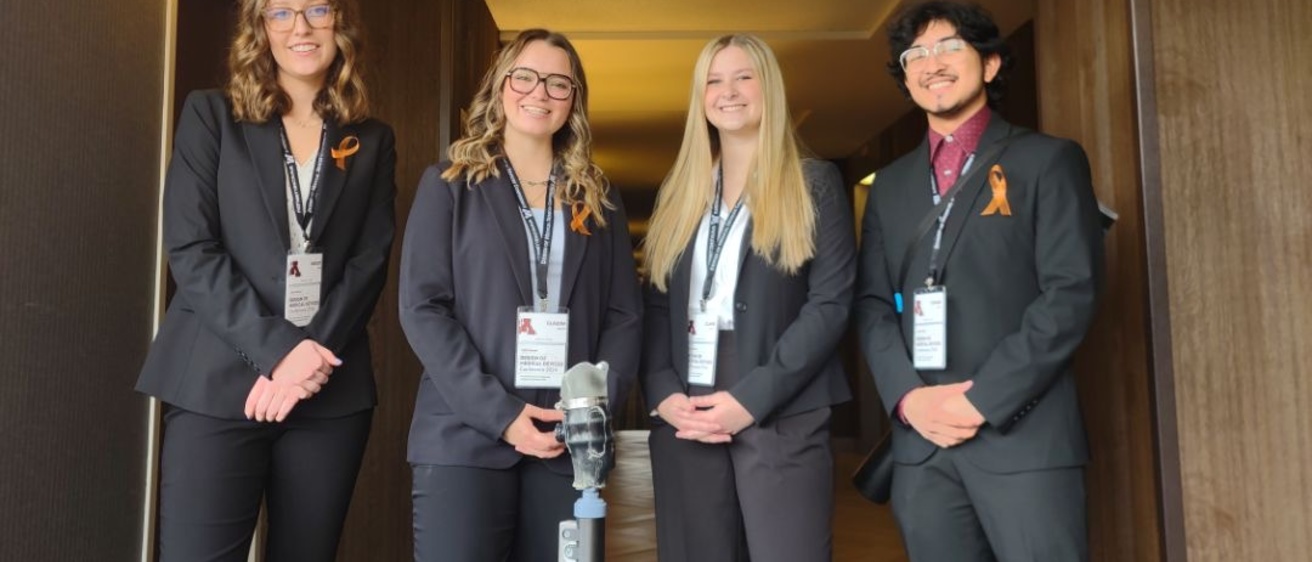
A team of biomedical engineering students at the University of Iowa are turning their senior design project into a business venture.
The four-person senior design team laid the groundwork for commercializing a novel prosthetic device for the lower leg that can adjust as children grow. The adaptable below-the-knee pediatric prosthesis showed enough promise the students filed for a provisional patent and formed a limited liability company, GroLimb, LLC.
“We are trying to keep the kids out of the clinic and reduce the cost out of pocket for parents,” said Claire Catlett, a member of the senior design team.
The design was accepted into a competition at the 2024 Design of Medical Device Conference, hosted at the University of Minnesota in April. It won the grand prize, beating out competition from Johns Hopkins University, Yale University, and Duke University, among others.
“We’d been working on this project for a year and didn’t realize how big of a deal it was,” said Claudia Archer, a team member who has been passionate about prostheses since the fifth grade.

The team consists of Catlett and Archer, as well as Tushar Mitra and Madelyn Timm. Archer and Mitra both plan to next pursue graduate degrees, while Catlett and Timm plan to begin their professional careers after graduation.
Ashley Hulshizer of the Limb Lab in Iowa City served as their mentor on the project, along with Colleen Bringman and Kristan Worthington, associate professors of biomedical engineering.
The product consists of three separate components: a socket, a pylon, and the foot. Importantly, the components can expand in length and width. Each component is unique in their mechanisms and the fact they work together as an all-encompassing system that parents or guardians can adjust themselves caught the attention of judges and others at the competition.
“This validates the design is something people see potential for and there is a need for it,” Timm said.
In the United States, one in 1,900 babies are born with a congenital limb difference and 2,536 children are generally impacted by lower limb loss each year, according to the team’s research. As children hit growth spurts, they may require frequent replacements or suffer long lasting musculoskeletal impacts due to poor fitting prosthesis.
Most of the existing adjustable prosthesis on the market are designed for adults and not kids. The students’ design could last a year, which would be an improvement over quarterly replacements that can be the reality during a growth spurt.
The students have identified a need for Food and Drug Agency approval to begin clinical trials, a utility patent, additional testing, and to develop a network of clinicians, patients, and companies. This promising invention entails substantial work before the product is to be brought to market, but the team is excited to embark on the journey.
”This project really grew beyond anything we could’ve ever expected," Mitra said. "We’re very excited to continue working on this as we branch out from Iowa and gain more experience in our corners of the industry. The hope is that we’ll be able to work bit by bit over the next couple years, before coming back together and really tackling this thing head on.”
